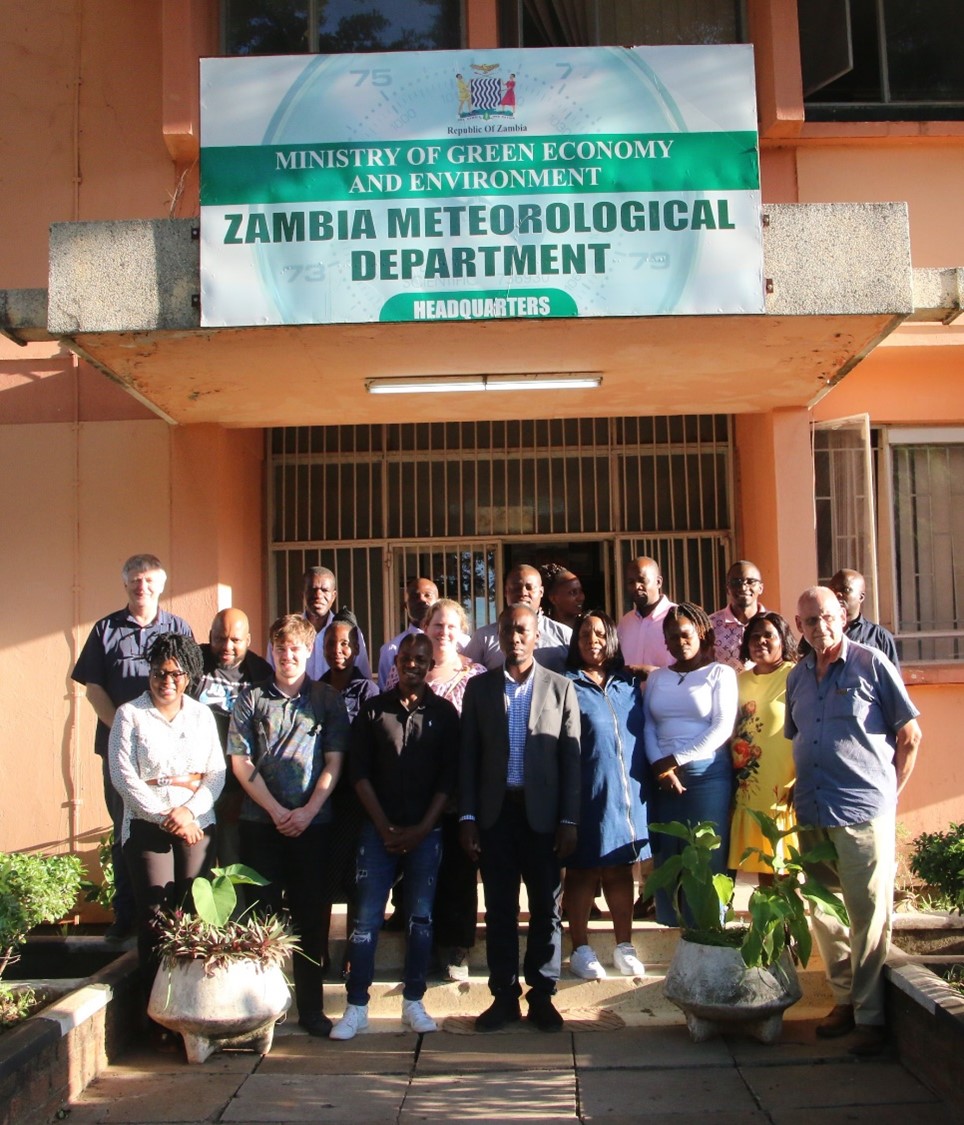Zambia considers continuing with nowcasts following successful severe weather testbed
The Zambia Meteorological Department (ZMD) could become the latest National Meteorological and Hydrological Service (NMHS) in southern Africa to implement nowcasts.
Nowcasting is a method used for very short-range forecasting. Directly connected to observed weather, it involves mapping the current weather and using its estimated speed and the movement of its direction to carry out forecasts with a lead time of zero to six hours. The technique is considered crucial for alleviating the devastation that often comes with hazardous weather.


The ZMD’s contemplation of adding nowcasting to its regular forecasting activities follows lessons drawn from southern Africa’s first hazardous weather testbed for the improvement of early warnings systems in relation severe thunderstorms.
A testbed involves teamwork between weather scientists, practitioners and user engagement specialists in the simulation of real-time nowcasting and short-range forecasting for the creation of severe weather warnings that are delivered to partnering user groups and co-evaluated for effectiveness.
The scientists, practitioners and user engagement specialists working on the two-week testbed project were drawn from the World Meteorological Organisation and a number of countries including the United Kingdom (UK), South Africa, Mozambique, and Finland.
A first for southern Africa, the testbed came to an end on Friday 9 February 2024, having taken place between Pretoria in South Africa, Maputo in Mozambique and Lusaka, with the Zambian capital serving as its main Operation Centre.
Until this testbed, nowcasting, which is practiced widely across the developed world, was a somewhat foreign concept in southern Africa. Only a few countries such as South Africa used nowcasts to predict the weather and issue severe weather warnings.
But this is about to change if what ZMD Director, Mr Edson Nkonde, said at the end of testbed. Addressing participants at his office during a meeting where the team reflected on how the project panned out, Mr Nkonde said the ZMD was considering adding nowcasts to its daily operations.
His announcement came amid calls for the ZMD to carry on implementing nowcasting in addition to regular forecasting efforts, with the participants in unison that this was the way to go.
“Those are the discussions we are also taking forward to the government ... during the course of next week, we will have, at least, a roadmap that will guide us in terms of implementing nowcasts,” Mr Nkonde said.
He added that his office would also be looking at ways to continue with other takeouts from the testbed such as the user engagement, which he characterised as a “very key component” of the work of NMHSs.
“We can do the science [in] general but the users ... are very critical for us. Understanding their needs and how we address those needs is very key for us,” Mr Nkonde explained.
During the course of the testbed, multiple daily forecasts were issued to a select team of community observers based in Kanyama, Katlehong and Boane townships on the outskirts of Lusaka, Johannesburg and Maputo. In addition to feeding back to the weather scientists and practitioners, the observers also relayed their weather observations to the Operation Centres where the scientists and practitioners sat.
In Lusaka, observers and community members were taken through daily interactive discussions to unpack and make sense of forecasts and early warning systems. They also got a rare opportunity to share perspectives on weather forecasting with meteorologists in a face-to-face conversation that proved mutually beneficial as the two sides got to acknowledge the importance of each other’s points of view.
There were also guided tours of Kanyama, during which the testbed team got to see and hear firsthand the dire effects of hazardous weather and the extent to which these interrupt locals’ way of life.
Furthermore, there was an engagement day in Lusaka comprising a ceremonial launch of the testbed, interaction with about 20 domestic journalists and two webinars which attracted close to 60 participants.
The testbed was part of a a Weather and Climate Information Services (WISER) Early Warnings for Southern Africa (EWSA) project. WISER EWSA is led by the Met Office in the UK, commissioned by the UK government’s Foreign, Commonwealth and Development Office (FCDO), and supported by UK aid from the British people.
WISER seeks to generate novel weather information and ensure that this is communicated and used for disaster risk reduction decision-making and within this, WISER EWSA works collaboratively to co-produce critical early warning alerts for and with urban populations. This requires several elements including expanding capacity for nowcasting among National Meteorological and Hydrological Services in South Africa, Mozambique, and Zambia.
Additionally, WISER EWSA requires understanding the decision contexts of urban populations in order to set appropriate alert levels; and ensuring that the resulting co-produced early warning alerts reach the people who can use these to reduce risk.
Southern Africa was preferred as the site of the project due to the region’s vulnerability to extreme weather, which has over the years seen hundreds of thousands of people and livelihoods threatened. In addition, the predicted increase in storms in the region made the area an ideal site for the testbed. Another testbed is being planned for early 2025, with Maputo set to serve as its main base.


